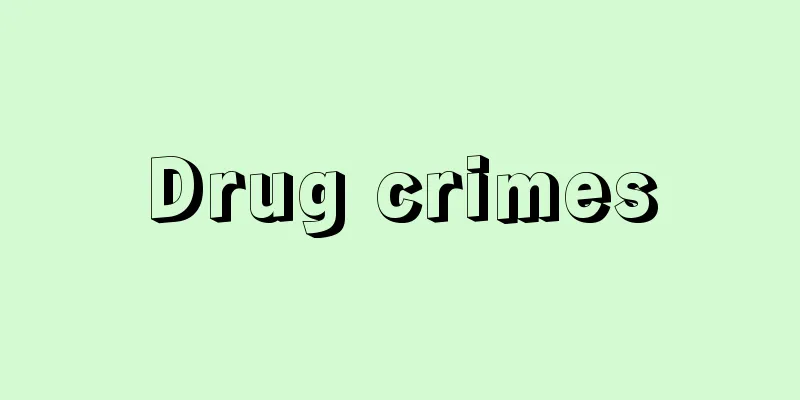Drug crimes

|
Crimes involving the abuse of dangerous and harmful drugs such as narcotics and stimulants, as well as the importation, sale, etc. of these drugs. Drug crimes in Japan were hardly a problem before World War II, but after the war they became a major social issue that continues to this day. Looking at the changes in drug crimes during this time, roughly three major waves can be seen. The first was the sudden proliferation of stimulant drug (Hiropon) abuse against the backdrop of social and economic turmoil after the war. Violators continued to increase sharply even after the Stimulants Control Law was enacted in 1951, and in 1954 the number of people arrested reached 55,664. Source: Heibonsha World Encyclopedia, 2nd Edition Information |
|
麻薬や覚醒剤等の危険・有害な薬物を乱用したり,それらの輸入・販売等をする犯罪。日本における薬物犯罪は,第2次大戦前にはほとんど問題となっていなかったが,戦後は重大な社会問題となって今日に至っている。その間の薬物犯罪の推移をみると,およそ三つの大きな波が認められる。 第1は,戦後の社会的・経済的混乱を背景とした,覚醒剤(ヒロポン)乱用の急激なまんえんである。1951年の覚せい剤取締法施行後も違反者は急増を続けて,54年には検挙人員が5万5664人に達した。
出典 株式会社平凡社世界大百科事典 第2版について 情報 |
Recommend
Lawson cypress
...Benihi (red cypress) C. formosensis Matsum. gr...
Grilled sea urchin - Uniyaki
...As Saibara says, "What should be served a...
Calabria (English spelling)
A region in southern Italy. It has an area of 15...
Gannibal, AP (English spelling) GannibalAP
...His paternal ancestors were nobles of distingu...
Dischidia platyphylla (English spelling) Dischidiaplatyphylla
…[Ichiro Sakanashi]. … *Some of the terminology t...
Canaanite mythology
…Recently, Oriental archaeology has provided many...
Bravo Crichton - Bravo Crichton
...This film portrayed the sexual customs of Amer...
Muḥammad V
1910‐61 Sultan and King of Morocco. Reigned 1930-5...
Official letter - official letter (English spelling)
In China, this is an old name for official documen...
Tsubokari method
This method involves harvesting a stalk of rice or...
Nguyen Phi Khanh - Nguyen Phi Khanh
...Vietnamese scholar and thinker in the early 15...
Barmen Declaration - Barmen theologische Erklärung
A declaration adopted at the First Confessional Sy...
Falstaff, Sir John
A famous comic character who appears in Shakespear...
King Philip's War - King Philip's War
A war between Indians and whites that broke out in...
Phytoseiidae
…General term for mites belonging to the family P...









